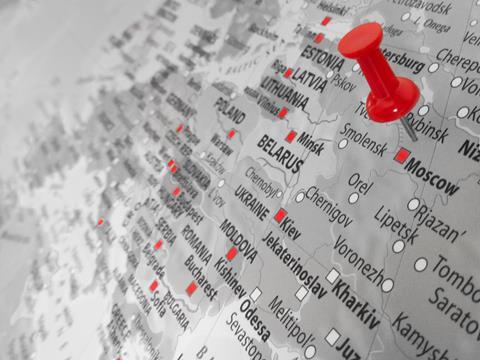
Analysis in the latest strategy document from Smithers Pira identifies key national markets in central and eastern Europe that are set to grow demand for packaging for the next five years. Produced in cooperation with Packaging Europe, The European Packaging Competitive Landscape: Strategic Forecasts to 2023 combines expert national and company profiles and data forecasts for the evolution in this key region.
The saturated nature of western European consumption of packaged means most growth potential lies further east. While western Europe is just over 75% of the combined European market, it is growing sluggishly at a rate of 1.3% year on year, compared to a mean rate of 3.7% year-on-year to the east.
This poses a challenge for packaging firms in terms of growing these markets as the value of the central and eastern European market rises by over €10 billion across the next five years to reach €55.8 billion in 2023. In this region the key markets are:
Russia
Russia is now recovering from a recession in the mid-2010s, exacerbated by international sanctions following its conflict with Ukraine. A resurgence in oil prices is underpinning recovery in the largest economy in eastern Europe and rising demand for packaged goods. It accounts for almost one-third of total packaging sales in 2018.
Modern retailing is developing rapidly in Russia, which positively impacts packaged food sales with an increasing variety of packaged products becoming more widely available, along with lower unit prices. Moscow’s import ban on food from the EU is limiting this market for established converters in the west, but there has been a noticeable upswing in the domestic packaging sector as a direct effect – favouring Russian based converters.
Healthcare and cosmetics packaging are expected to perform well over the forecast period as the economy recovers and consumers’ real incomes start to rise again.
Soft drinks consumption has declined in recent years due to the economic crisis in the country. Beer consumption is also declining sharply due to the economic crisis and the introduction of government measures to discourage heavy drinking.
.png)
Poland
The second largest packaging market in eastern Europe is Poland. Having exceeded €10 billion for the first time in 2018 it is worth more than a quarter of the total for Eastern Europe. The Polish economy is forecast to continue growing during 2018–23 at a healthy rate of close to 3.0% supported by solid investment and consumption growth.
This will be see positive growth for healthcare packaging and cosmetics and personal care packaging across this period. Packaged food continues to experience positive growth too, though soft drinks and alcoholic drinks packaging will only post moderate growth over the forecast period.
In recent years, Poland’s flexible packaging industry has experienced high levels of inward direct investment from international food brand owners, who are keen to take advantage of growing packaged food markets in eastern Europe and Poland’s lower production costs.
Other eastern Europe
The remaining countries of central and eastern Europe are mostly developing economies with good potential for further packaging market penetration, with many benefiting from entry into the European Union.
Hungary, the Czech Republic and Romania are the largest packaging markets in the region. Hungary, the Czech Republic and the Baltic States are the fastest-growing packaging markets.
Packaging market value is projected at €21.2 billion in 2018 and is forecast to grow 3.2% annually during 2018–23 to reach €24.8 billion.
The European Packaging Competitive Landscape: Strategic Forecasts to 2023 is available for purchase. Order now and claim an exclusive 10% discount for Packaging Europe subscribers.

















